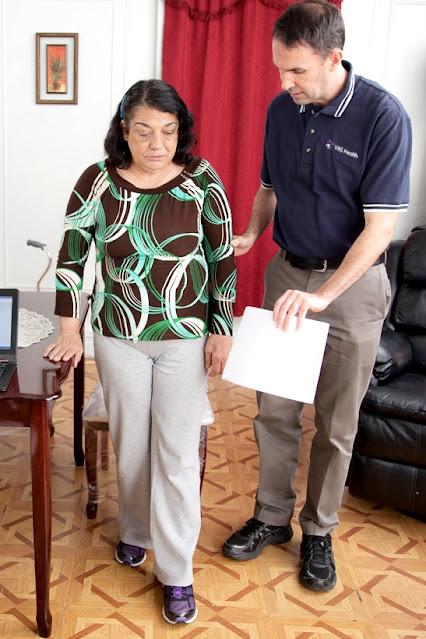By Allison Simms, Associate Director of Rehabilitation Services at VNS Health
HEALTH - While often underreported, falls are a growing issue that cannot be ignored when it comes to senior health and safety. This September provides an opportunity to shine a light on this serious issue during National Fall Prevention Awareness Month.
With more than 3 million people each year being treated in emergency facilities for falls, fall prevention should be top of mind year-round.
The statistics on home falls among seniors provided by the CDC are alarming, with roughly 25% of individuals 65 or older experiencing a fall each year. However, the numbers are actually much higher because less than half of falls are reported out of fear and embarrassment. For example, a mother may not tell her daughter that she fell out of fear of being put into a nursing home.
In my role as Associate Director of Rehabilitation Services at VNS Health, my colleagues and I see how difficult it is for people who fall to truly accept that they’re not as strong and steady on their feet as they once were. One thing to keep in mind if you have a family member who is at increased risk for falls is to talk to a medical professional to see if some balancing or strengthening exercises from a physical therapist might be helpful in improving both confidence and strength.
Movement is a key factor in reducing falls, and it doesn’t have to be anything too strenuous. For example, a patient can hold a can of vegetables and move their arm in a circular motion. That’s weight-bearing exercise.
When it comes to fall-related injuries, physical and occupational therapists play an integral role in both prevention and recovery. Gil Esteban, a physical therapist at VNS Health serving homebound patients in Washington Heights for more than three decades, emphasizes the necessity of clear communication and education when it comes to meeting a patient’s needs and preventing falls. He works closely with a dedicated team of home care professionals who collaborate on the best plan of action. He schedules treatment with occupational therapists, speech therapists, nurses and home health aides to ensure the best possible patient outcome.
Among the many challenges facing his patients, Gil notes that where they live can actually make them more at risk for a fall. Whether it’s a small space, cluttered walkways, or even pets, there are many hazards in the home that can pose a fall risk. Gil recalls one patient whose house was so cluttered he had to walk sideways while dodging her five dogs in order to get into the apartment.
“If walking around this apartment was a challenge for me, imagine how it might affect an older person who struggles with failing eyesight or balance issues or has already injured themselves with a fall,” said Gil.
In addition to the challenges of navigating small, crowded living spaces, many of Gil’s patients are sedentary, which can lead to atrophy and loss of muscle mass.
The impact of COVID on the homebound is also a contributing risk factor for falls, as many patients were deconditioned and isolated during the lockdown. When a patient has diminished muscle mass, everyday activities like getting out of bed or walking to the kitchen can become difficult, thus increasing the risk of a fall. To overcome these issues, Gil frequently finds himself working with patients out in the hallways, on stairwells, and even in the building lobby to give them the proper space their therapy requires, especially those who use a walker or cane.
When my colleagues and I visit patients in their home to do a falls risk assessment, there are some common safety issues that can be easily improved:
• Declutter the living space to provide a clear walking path and reduce the risk of tripping over obstacles.
• Closely monitor medications that may cause dizziness or lower blood pressure.
• If someone has lost weight during the pandemic but are still wearing the same size clothes, they are at a greater risk of tripping over those loose-fitting clothes and falling. Wearing clothes that fit can help avoid this type of fall.
• Wear proper shoes. Our feet shrink as we age and wearing shoes that are the correct size is an important factor in reducing falls.
• Adjust sleep positions. Patients who sleep on the edge of the bed are more likely to fall out of bed than those who sleep in the middle.
This National Fall Prevention Awareness Month, keep in mind the risk factors that increase the potential for a fall to occur. For more information about Rehabilitation Therapy Services at VNS Health, which includes physical, occupational and speech therapy, visit www.vnshealth.org/rehab.

Comments
Post a Comment